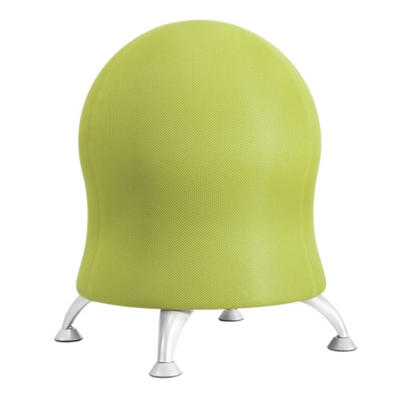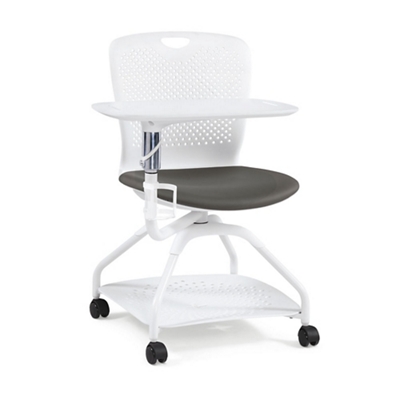Is your kid raising their hand in the middle of the day, shouting "Mr. Dad!" or "Mrs. Mommy!"? Has your college-age student resorted to calling you "Professor Parent" while they're studying? Maybe your learn-from-home situation hasn't gone that far, but when you're making a quick transition from the classroom to the living room, there's a lot of considerations that can make things as smooth as possible.
Find Smart Furniture
After working from home for a while, you may have noticed that pulling up a chair at the kitchen table isn't quite cutting it. Just as you've optimized your work-from-home setup, it's just as important to do the same for young learners in the house. A dedicated workspace can take on a lot of forms, but for kids, this might look a little different than what they're used to at school.
Size and stature will determine what the right setup will look like. Desks are available in all shapes and sizes, but there are options that are adjustable in height and can grow in height just as your children do. Even if the desk is a touch high, choose a task chair that has a little extra lift to bring them up to the workspace without creating an imbalanced or strained posture.
Seat Up for Success
Schools often select furniture based on a few common tenets-- what pieces will help the largest majority of students, what fits within the budget, and what has always worked in the past. When transitioning to a learning-from-home environment, you have the opportunity to find solutions that are individually tailored to your child's unique needs and learning style.

A Work / Life / School Balance
When in-home learning sneaks up on you, there's a good chance that you'll have to make accommodations in your own workday. If you're both working-from-home and teaching-from-home, syncing up and managing schedules is a necessity for day-to-day success. Try to match up your most productive working hours or online meetings with blocks of time set for video instruction or intensive, independent study and, from there, work out what times you'll need to be free to give instructions, have a bite to eat, or when you both need a breather.
Innovate, Don't Replicate

Some of the tools they're accustomed to, and some of the variety, may be limited by what supplies you're able to have at home, but there's always workarounds to be found. When some classroom staples are missing, don't necessarily try to replace them exactly, but rather find ways to go beyond the schoolhouse. Don't have a dry erase board? Try sidewalk chalk. Not enough books to choose from? Rent children's eBooks from your library's online system… The list goes on and on.
Digital Details
Look towards high-tech solutions to student needs. If online learning is going to become an occasional part of their life, your child might benefit from a separate monitor and webcam to use instead of the onboard devices on a Chromebook, laptop, or tablet. The right amenities and peripherals can make the shift to learning from home easier on everybody-- especially the student.
Building out these digital workstations can also encourage kids to pursue outside activities that are educational and can help them pursue passions that may someday turn into careers they love. Take their interests into consideration while adding in a few extras to their new study spot.
Be Flexible
To put it simply, change can be scary. Depending on the reasoning, dramatically shifting gears in the middle of a school year can be extremely challenging and taxing, both emotionally and academically. Patience, understanding, and compassion goes a long way in these scenarios. That's a lesson that your young learner will take with them as they grow through their education all the way through grown-up life.
Who's the best companion while you're outfitting this space? The budding student themselves. Their opinion matters and a sense of choice can make their new education station a place that feels fun and less like a chore. Even though there's some rigid do's and don'ts when outfitting a learning space, there's a bit of flexibility that can be found, and these gaps can be filled with fun for all.

0 Comments